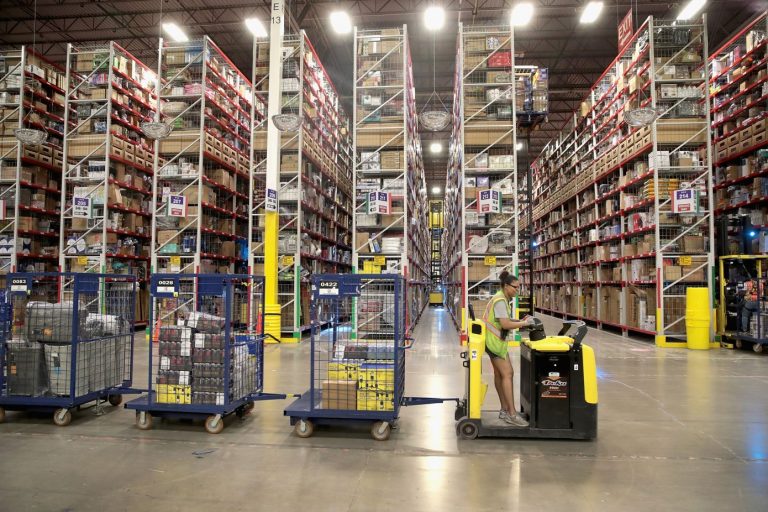
E-commerce giant Amazon has deployed its one millionth robot across its global network of over 300 fulfillment centers, with the landmark robot recently introduced in Japan.
For employees, the robots save physical labor and repetitive tasks, plus those who have been trained to manage the machines can make a lot more money.
This achievement underscores Amazon’s position as the world’s largest manufacturer and operator of mobile robotics. Alongside this, Amazon unveiled DeepFleet, a new generative AI foundation model designed to enhance the efficiency of its robotic fleet.
Register for Tekedia Mini-MBA edition 19 (Feb 9 – May 2, 2026): big discounts for early bird.
Tekedia AI in Business Masterclass opens registrations.
Join Tekedia Capital Syndicate and co-invest in great global startups.
Register for Tekedia AI Lab: From Technical Design to Deployment (next edition begins Jan 24 2026).
Announcing the deployment of Robots, Amazon wrote via a blog post,
“We’ve just deployed our 1 millionth robot, building on our position as the world’s largest manufacturer and operator of mobile robotics. This milestone robot was recently delivered to a fulfillment center in Japan, joining our global network that now spans more than 300 facilities worldwide. But that’s only part of the story.
“We’re also introducing a new generative AI foundation model we’ve designed to make our entire fleet of robots smarter and more efficient. Called DeepFleet, this AI technology will coordinate the movement of robots across our fulfillment network, improving the travel time of our robotic fleet by 10% and enabling us to deliver packages to customers faster and at lower costs.”
Built using Amazon’s extensive inventory movement data and AWS tools like Amazon SageMaker, DeepFleet minimizes congestion and streamlines robot paths in fulfillment centers, allowing Amazon to store products closer to customers.
This results in faster deliveries, lower operational costs, and reduced energy usage. The AI model’s ability to learn and improve over time ensures ongoing efficiency gains, reflecting Amazon’s practical approach to AI innovation focused on solving real-world challenges.
Amazon’s deployment of one million robots and the introduction of DeepFleet will have several significant impacts on the company which include:
1. Operational Efficiency: DeepFleet’s AI-driven coordination reduces robot travel time by 10%, minimizes congestion, and optimizes inventory placement. This leads to faster order processing (up to 25% quicker with systems like Sequoia) and lower operational costs, boosting Amazon’s ability to handle high order volumes, especially during peak seasons.
2. Cost Savings: By automating repetitive tasks like sorting and moving inventory, Amazon reduces labor costs and energy usage. Localized inventory storage enabled by DeepFleet further cuts shipping costs, improving profit margins.
3. Scalability: With robots now nearly equaling its 1.56 million human workforce, Amazon can scale operations across its 300+ global facilities more effectively, meeting growing e-commerce demand without proportional increases in labor costs.
For employees, the rise of automation has shifted job roles from repetitive tasks like lifting and sorting to higher-skilled positions managing robots, often with significantly higher pay. However, this transformation comes with workforce reductions. CEO Andy Jassy has been on a mission to trim costs across the company, laying off 27,000 employees since the beginning of 2022. He noted that while Amazon will continue to need human workers. The company averaged 670 employees per facility last year, the lowest in 16 years, according to a Wall Street Journal analysis.
Meanwhile, concerns about job displacement persist, as automation may reduce the need for manual labor, with CEO Jassy acknowledging that generative AI could shrink certain job categories while creating others. Recall that he recently indicated plans to further reduce the total workforce in the coming years. In May this year, the company laid off roughly 100 employees in its devices and services division.
As Amazon integrates advanced robotics and AI into its operations, it is reshaping labor, boosting productivity, and reducing turnover. Yet, the increasing automation raises questions about the long-term impact on jobs, even as it creates new opportunities in tech-driven roles.



